What’s new in the archives?
The paintings of Marius Fiche
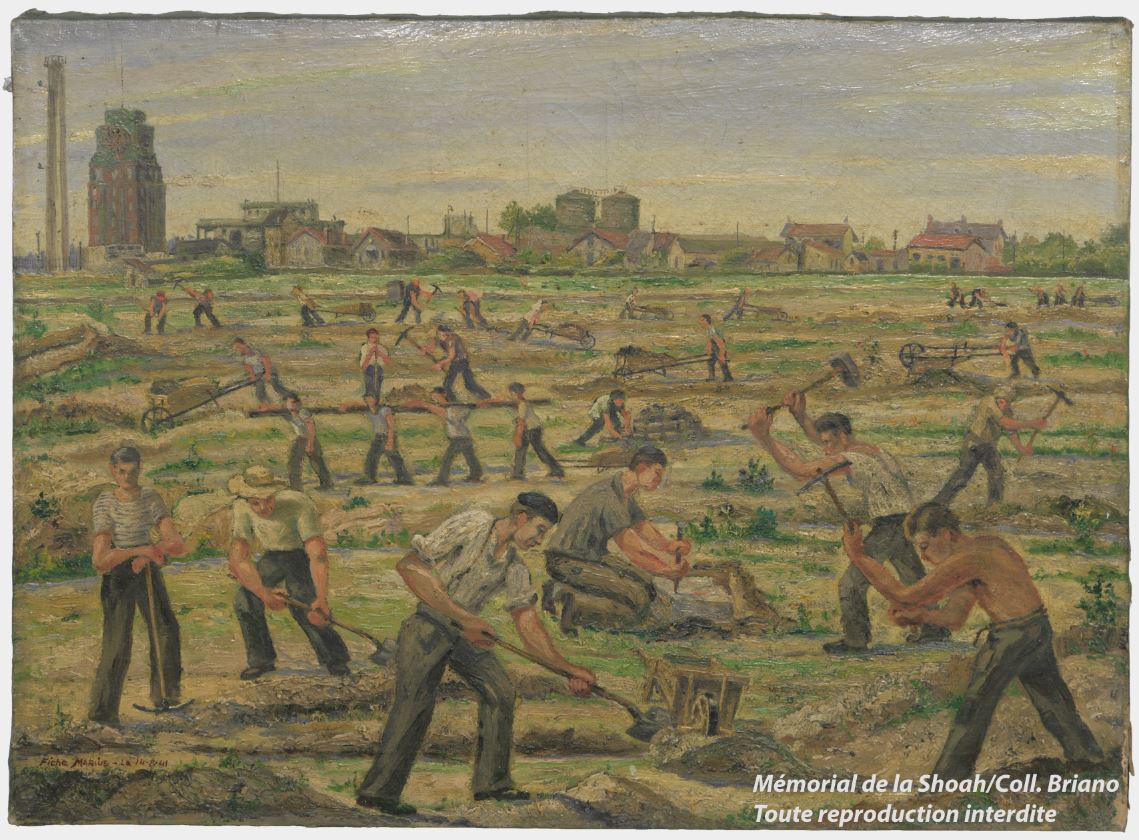 Marius Fiche was born on April 24, 1883, in Elisabethgrad (Russia). He is the son of Khassie Durtosvnik and of Temchine Fiche. He arrived in France in 1904 and married Catherine, born Dourbinskaïa with whom he had two daughters: Louise married Fridman, born in 1906, and Marie married Zélinsky, born in 1908. The family resides at 8 rue l'Encheval in Paris (XIXth arrondissement). Marius is a painter-decorator in different film houses (Gaumont, Pathé...).
Marius Fiche was born on April 24, 1883, in Elisabethgrad (Russia). He is the son of Khassie Durtosvnik and of Temchine Fiche. He arrived in France in 1904 and married Catherine, born Dourbinskaïa with whom he had two daughters: Louise married Fridman, born in 1906, and Marie married Zélinsky, born in 1908. The family resides at 8 rue l'Encheval in Paris (XIXth arrondissement). Marius is a painter-decorator in different film houses (Gaumont, Pathé...).
A volunteer in the French Foreign Legion, Marius fought during the First World War and was wounded three times. He was naturalized French in 1938, then denaturalized in 1941.
Under the Occupation, Marius, Catherine, their daughter Marie as well as the husband and the three daughters of the latter take refuge at 22 rue de L'Harmonie in Drancy (Seine-Saint-Denis). All are arrested and interned in Drancy.
Marius Fiche is arrested and interned at the Drancy camp on December 8, 1942. He is deported from Drancy to Auschwitz on February 11, 1943 by convoy No. 47.
Catherine Fiche, Marie Zélinsky, her husband Rachmil Zélinsky and their three daughters, Denise, Jacqueline and Louise, were deported on September 2, 1943, by convoy No. 59. Only Rachmil Zélinsky survives the deportation.
On 25 January 2019, Sylvain Briano, great-grandson of Marius Fiche, presented the Memorial with two paintings made by his great-grandfather, including one depicting a scene of agricultural work in the town of Drancy and created on 14 August 1941.
the letter found from H. Strasfogel (sonderkommando)
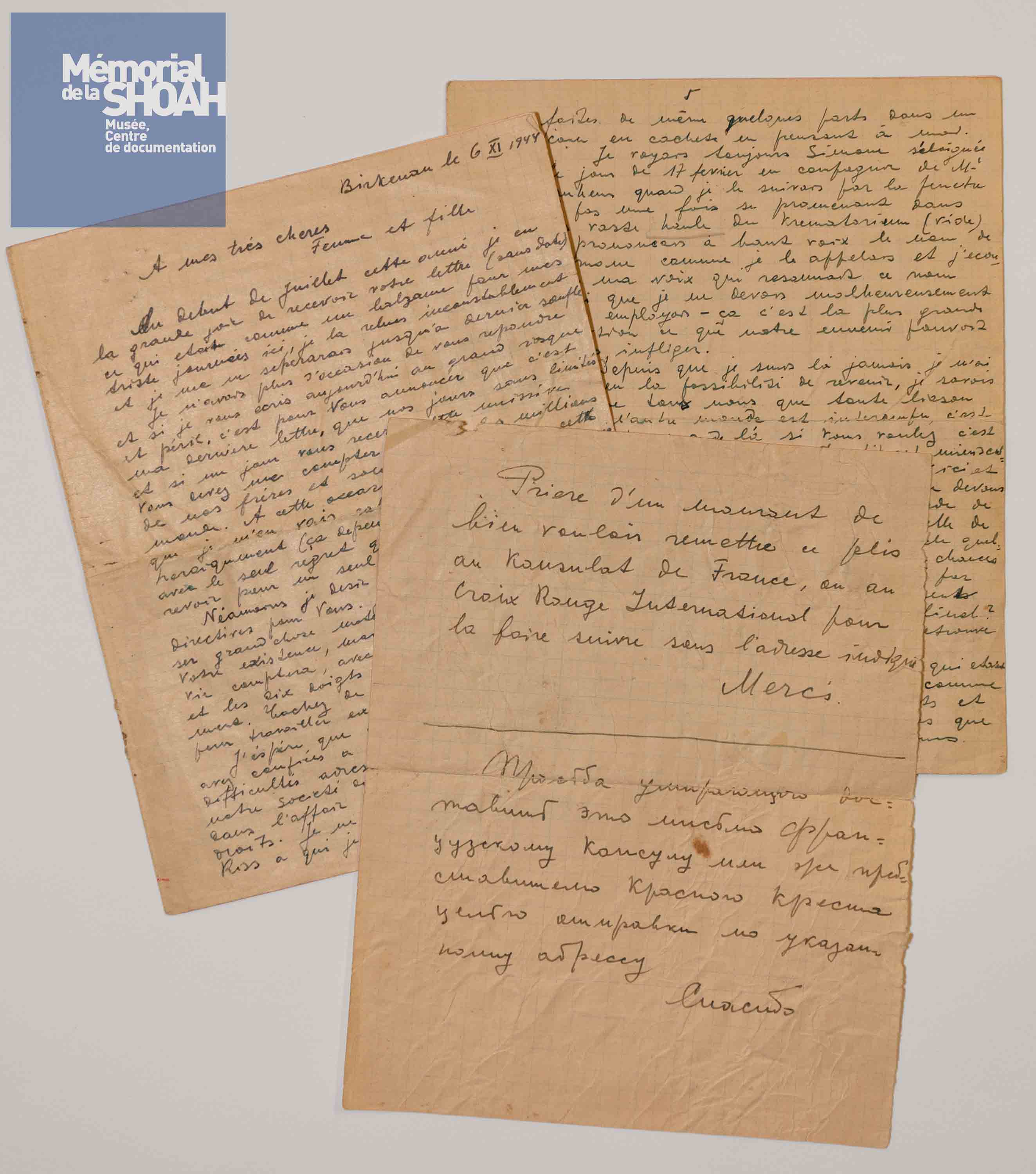 By researching the letters written in Birkenau, Karen Taieb, responsible for the archives of the Shoah Memorial, recently made a important historical discovery which allowed to find the identity of the author of only testimony left in French by a member of the Sonderkommando.
By researching the letters written in Birkenau, Karen Taieb, responsible for the archives of the Shoah Memorial, recently made a important historical discovery which allowed to find the identity of the author of only testimony left in French by a member of the Sonderkommando.
To read the article that we devoted to this discovery and the transcript of H. Strasgogel’s letter, click on this link.
en savoir +
The yellow stars of Mathilde Gosset, born Samuel
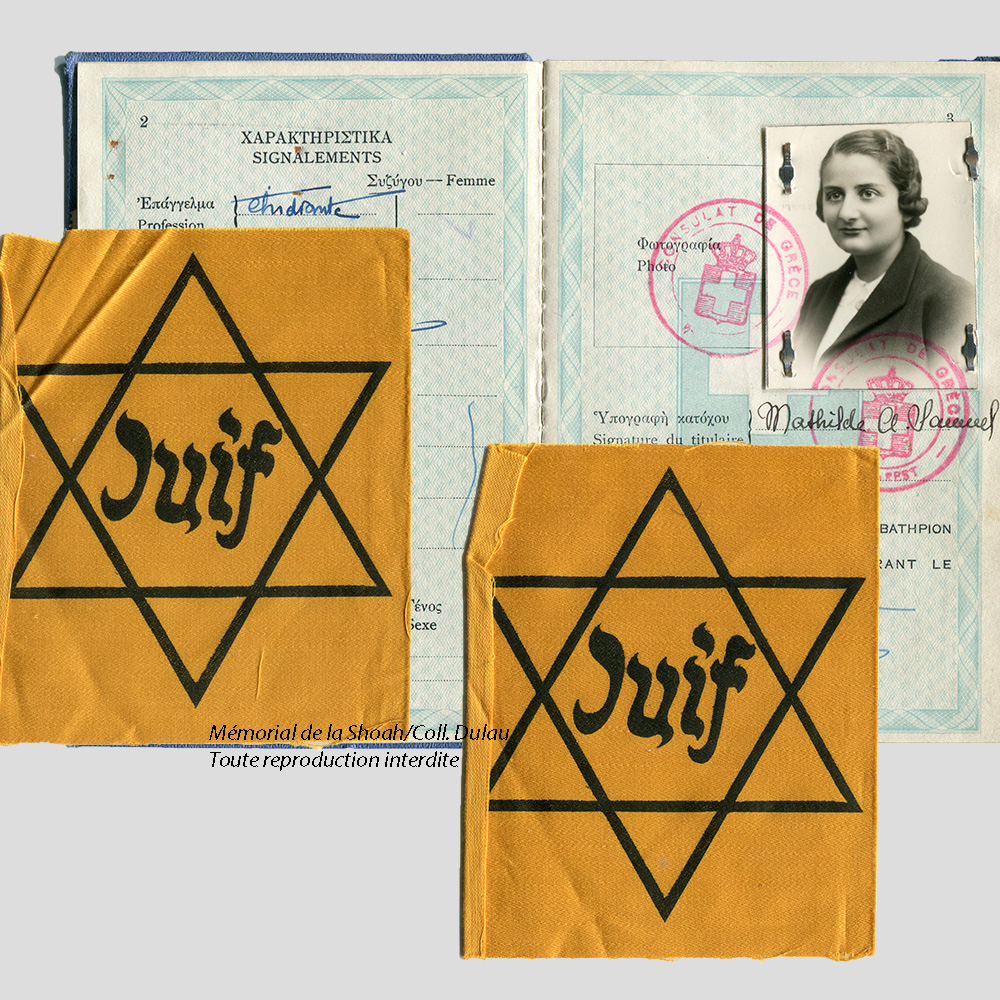 Mathilde Gosset was born on March 5, 1916, in Sofia (Bulgaria). She is the daughter of Aaron and Suzanne Samuel. All three live in Constantinople. In 1923, they settled in Bucharest due to the Greek-Turkish conflict. Mathilde begins her medical studies there but the wave of antisemitism forces her to interrupt them and leave Romania for France.
Mathilde Gosset was born on March 5, 1916, in Sofia (Bulgaria). She is the daughter of Aaron and Suzanne Samuel. All three live in Constantinople. In 1923, they settled in Bucharest due to the Greek-Turkish conflict. Mathilde begins her medical studies there but the wave of antisemitism forces her to interrupt them and leave Romania for France.
In Paris, she meets a medical student, Jean-Robert Gosset. They married in 1938 at the French consulate in Romania, then returned to France. Their daughter Françoise was born in 1940. They reside in the 15th arrondissement. Following the census, Mathilde receives two yellow stars. A commissioner informs her of the danger she is now facing. Mathilde does not wear her stars. The couple and their daughter move to Versailles with Jean-Robert’s mother, then in the 16th arrondissement.
As a medical student, Jean-Robert spends time on vacation at the railways and in various hospitals; he is part of a network that dresses chest radios to avoid the mandatory labor service for some French people. It is this group that made up the identity papers that Mathilde Gosset, mother of Jean-Robert, had declared as lost to make them available to Mathilde Gosset née Samuel, wife of Jean-Robert.
After the war, Mathilde returns to her building in the 15th arrondissement and learns from the concierge that in July 1942 the police had come to arrest her during the Vél d'Hiv raid. Mathilde and Jean-Robert also have a son, Christian born in 1944, and a daughter, Geneviève born in 1948. Mathilde brought her parents to Paris in 1948.
Geneviève Dulau, born Gosset, donated to the Shoah Memorial in early January 2019 yellow stars from her mother (photo) that were never worn.
The JOURNAL OF HENRI BURG
 Born in Ukraine in 1909, Henri (Hersch) Burg studies in a rabbinical school until the age of 16. In 1926, after obtaining the Romanian baccalaureate, he arrives in France in order to study the medicine in Tours for two years, then in Paris. He becomes a doctor. He marries Hélène Coiffard in 1935. Both reside at 26 rue Baudin in Argenteuil. In 1936, he visits his family in Romania and, following his trip, he brings back his little sister Malvina who is 15 years old in France. He is naturalized French in 1937. He is a reserve officer in 1937, mobilized in 1939-1940 then he resumes his profession. He obtains from the council of the Ordre des médecins de la Seine-et-Oise the authorization to practice medicine. In 1941-1942, he treated communist resistance fighters and hosted resistance resistance meetings. Suspected of resistance, he is arrested and interned in Colombes then to the health prison. He holds a newspaper during this period. Released a few months later, he resumes his activity by hiding. In 1945, he resumes his legal exercise of a doctor generalist in Argenteuil. He is also a municipal councillor of the commune. He dies a few months before his retirement from a car accident in Normandy.
Born in Ukraine in 1909, Henri (Hersch) Burg studies in a rabbinical school until the age of 16. In 1926, after obtaining the Romanian baccalaureate, he arrives in France in order to study the medicine in Tours for two years, then in Paris. He becomes a doctor. He marries Hélène Coiffard in 1935. Both reside at 26 rue Baudin in Argenteuil. In 1936, he visits his family in Romania and, following his trip, he brings back his little sister Malvina who is 15 years old in France. He is naturalized French in 1937. He is a reserve officer in 1937, mobilized in 1939-1940 then he resumes his profession. He obtains from the council of the Ordre des médecins de la Seine-et-Oise the authorization to practice medicine. In 1941-1942, he treated communist resistance fighters and hosted resistance resistance meetings. Suspected of resistance, he is arrested and interned in Colombes then to the health prison. He holds a newspaper during this period. Released a few months later, he resumes his activity by hiding. In 1945, he resumes his legal exercise of a doctor generalist in Argenteuil. He is also a municipal councillor of the commune. He dies a few months before his retirement from a car accident in Normandy.
At the end of November 2018, Françoise Werba, one of Henri and Hélène Burg’s daughters, allowed the Shoah Memorial to digitize the diary kept by her father during his imprisonment.
Preface of the newspaper kept by Henri Burg
To Health on February 18, 1943
Preface
Today, after more than two months spent in the prison of the Health of Paris, I feel the need to write my impressions and my reflections. Solitude, so conducive to thinking, invites me to this work. Busy until today with the worries of daily life, I hardly had time to think. The struggle for existence was hard and left me no leisure. It took imprisonment, isolation from the outside world, to put my ideas in order. Little loquacious by nature and even less inclined to confidences, I would like to fill this gap by putting in these pages a bit of myself. So I dedicate this journal to my beloved wife, who fights with such dedication for my liberation and helps me through this so painful period. It is to her that I owe my courage and willingness to overcome obstacles. Faith in her and in our love, this is the stimulus of my life.
The newspaper will not be simply the daily account of my stay at La Santé. It will also include feedback on my past, the assessment of my life. And finally, I will write down my thoughts and feelings about the people who are dear to me and also about the people around me.
Could I crystallize my character by studying my past activity and reactions to events and people?
Such will indeed be my desire to then be able to give a purpose to my life.
The letters of Isaac Kon
Born on February 22, 1912 in Paris, Isaac (Jacques) Kon is the son of Faivel and Bluma Kon, both arrested during the Vél d'Hiv raid and deported by convoy No. 9. Isaac is a metalworker, he is married to Lucienne, a non-Jewish French woman, with whom he had a son, Michel, born on September 18, 1935. Isaac will be arrested, interned in Drancy, then in Beaune-la-Rolande. He is then transferred to Saint-Péravy-la-Colombe (Loiret) where he works in farms before being interned again in Drancy. Finally, he was deported to Auschwitz on November 20, 1943 by convoy No. 62. He will not return from deportation. During his internment in France, Isaac had been able to send his wife many letters. His grandson Nicolas Loyer lent to the Memorial, in May 2018, 125 pieces of correspondence written by Isaac so that good quality copies could be made and kept by the institution.
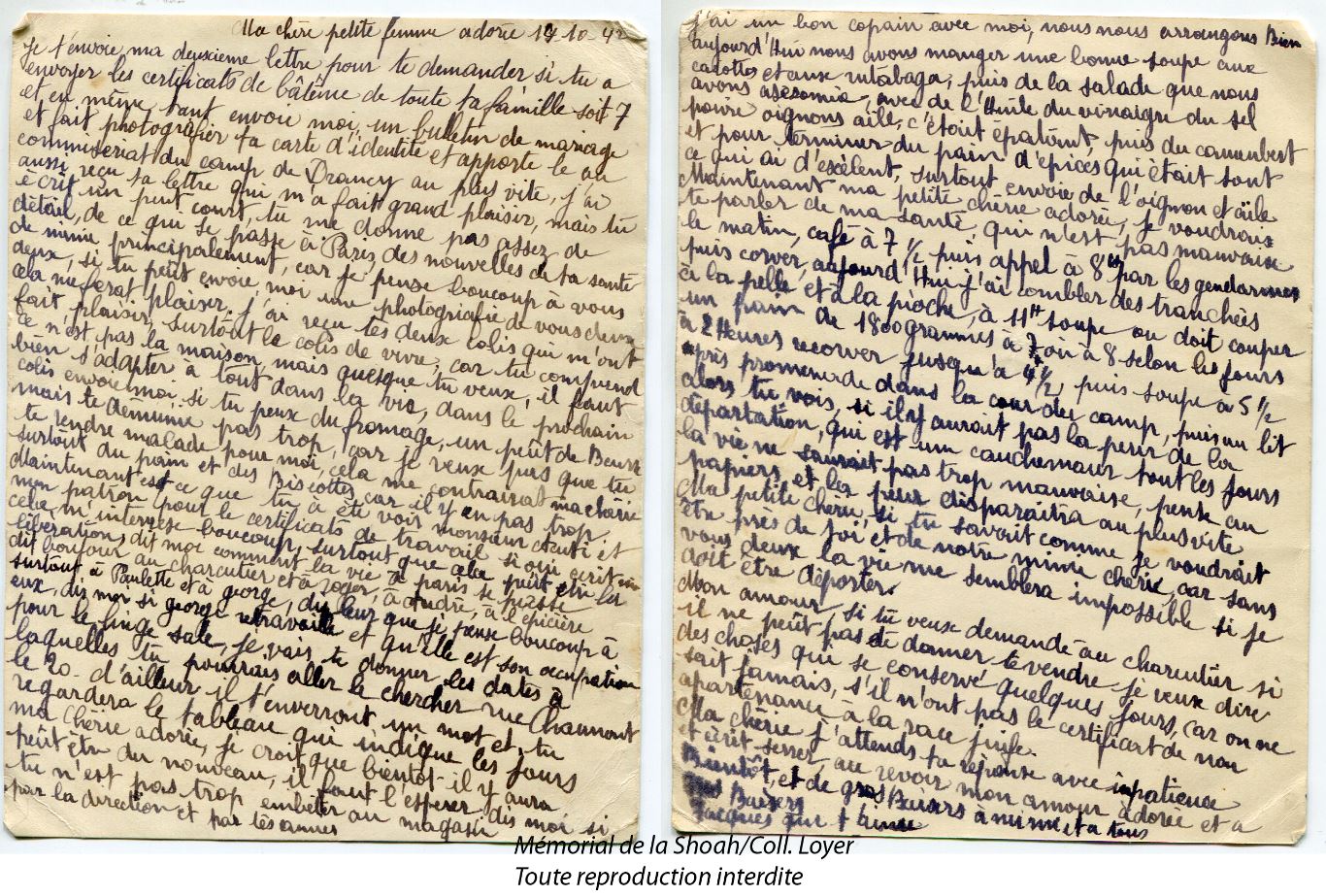
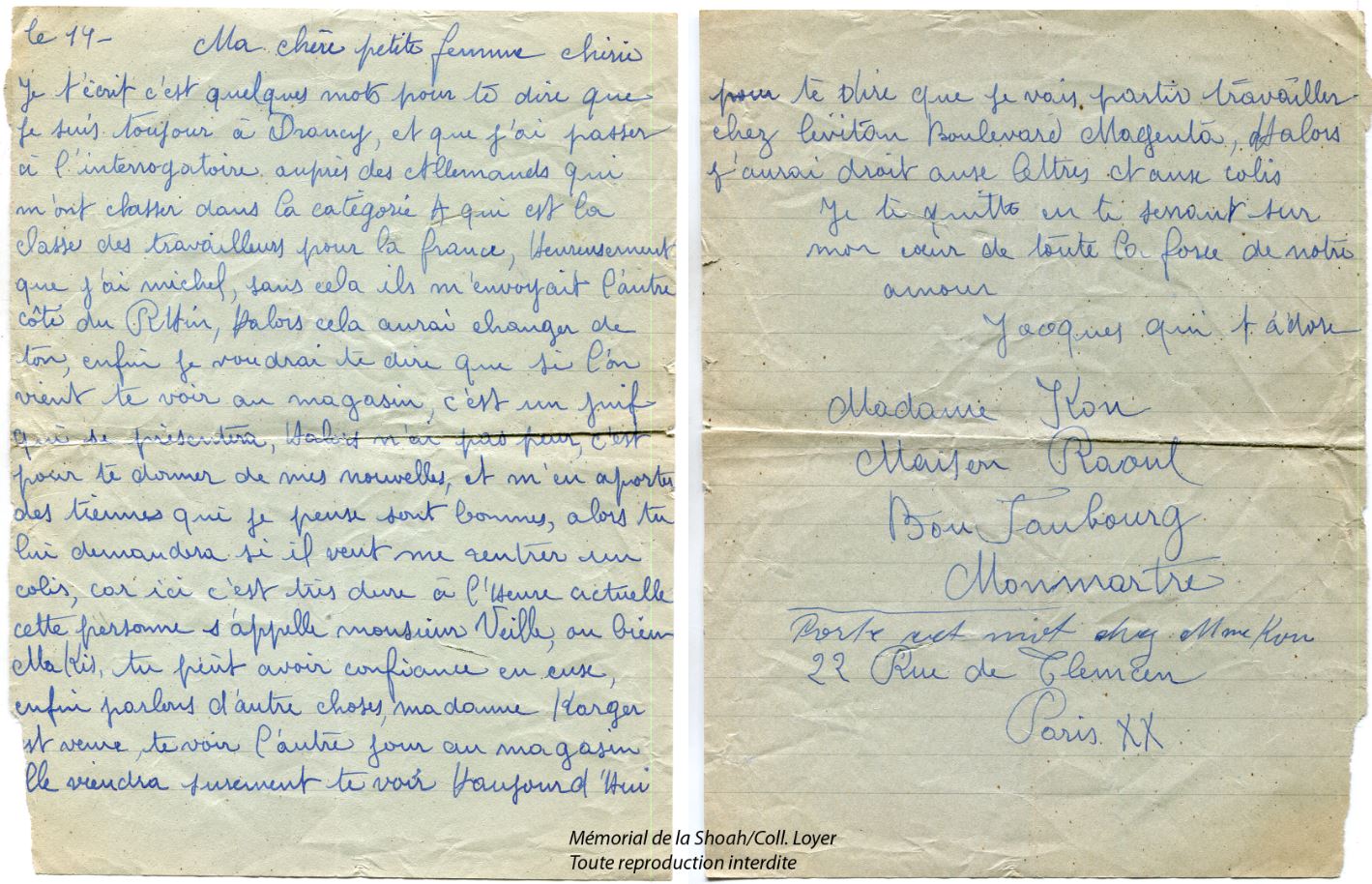
Rudolph grinberg
Rudolph Grinberg was born in 1922 in Philadelphia, Pennsylvania. His parents fled Romania in the early 1900s. During the war, he is in the American army, within the unit «Signal Corps». He is stationed in France at the end of the war. He attends the Seder in March 1945, as shown in the document submitted by his daughter, Michèle Grinberg, to the Shoah Memorial on March 20, 2018.
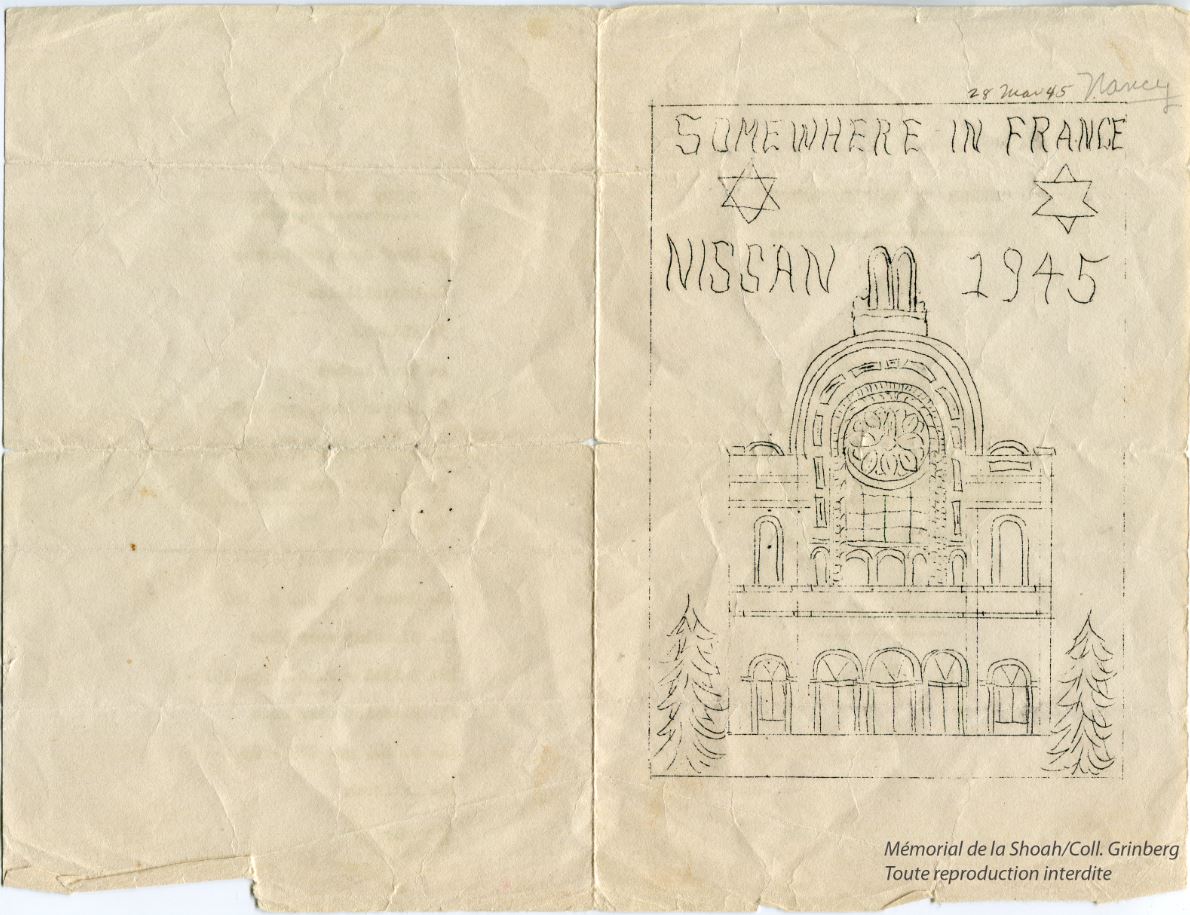
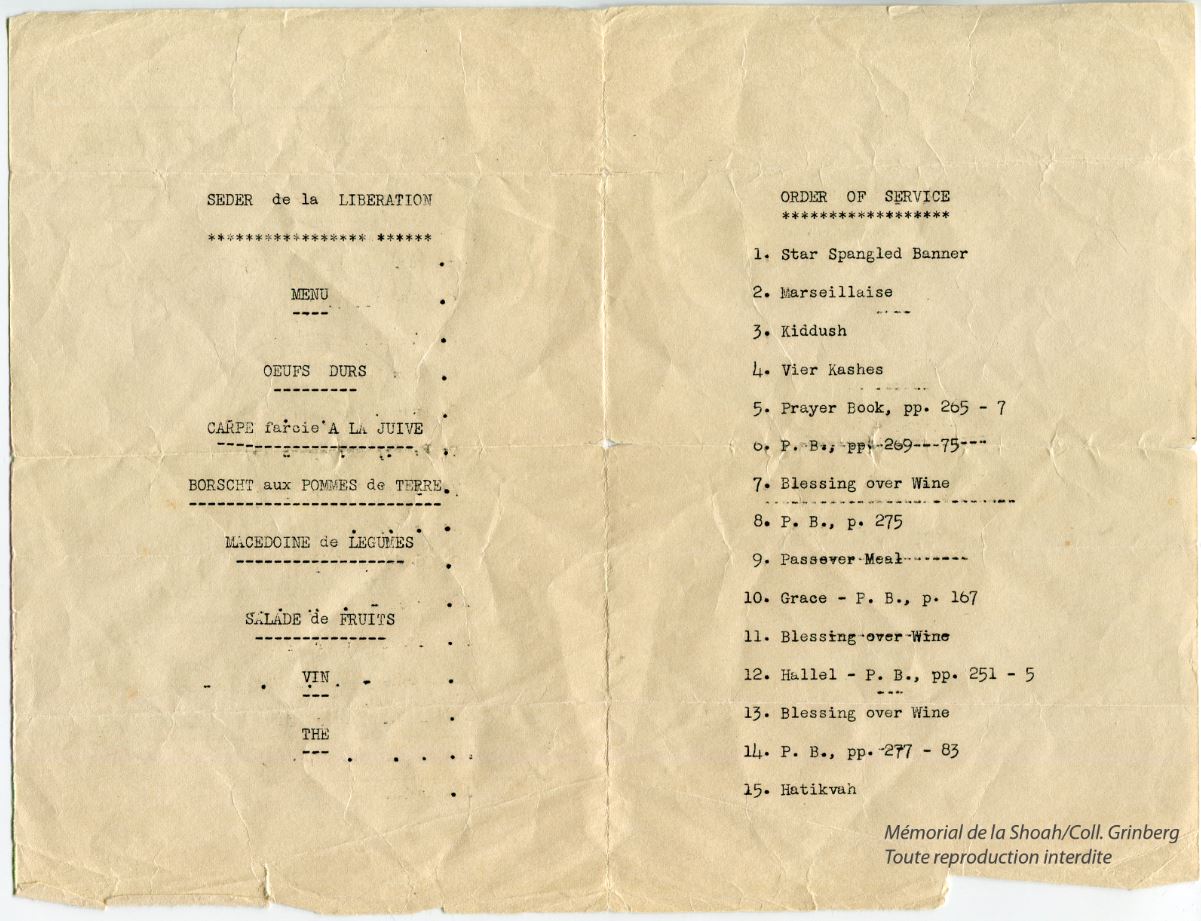
Jacob Knobel’s illustrated maps
Jacob Knobel and Rifka Sachs were born in Poland in 1905. They meet in Warsaw, then around 1930, they are sent by their parents to Palestine to flee antisemitism. They get married in Haifa in 1937 and become British citizens. In 1937, they go to Paris to visit the Universal Exhibition. They settled there; their son, Bernard, was born on June 20, 1940.
The family is arrested on December 5, 1940.
Rifka and Bernard were interned at the Vauban fortress, in Besançon, until 7 February 1941, the date of their liberation and that of other British subjects. They were arrested again in January 1944 and interned in Drancy then in Vittel.
As for Jacob, after his arrest in December 1940, he was interned at the fort of Romainville until the end of 1940, then at Drancy from December 30, 1940 to July 25, 1941, finally at the barracks of Saint-Denis, because of his British citizenship, until the Liberation in August 1944.
In November 2017, Bernard Knobel and his wife Linda Knobel-Bastide gave the Shoah Memorial the documents related to the internment of the Knobel family, including illustrated correspondence cards sent by Jacob to his wife and son from the barracks of Saint-Denis.
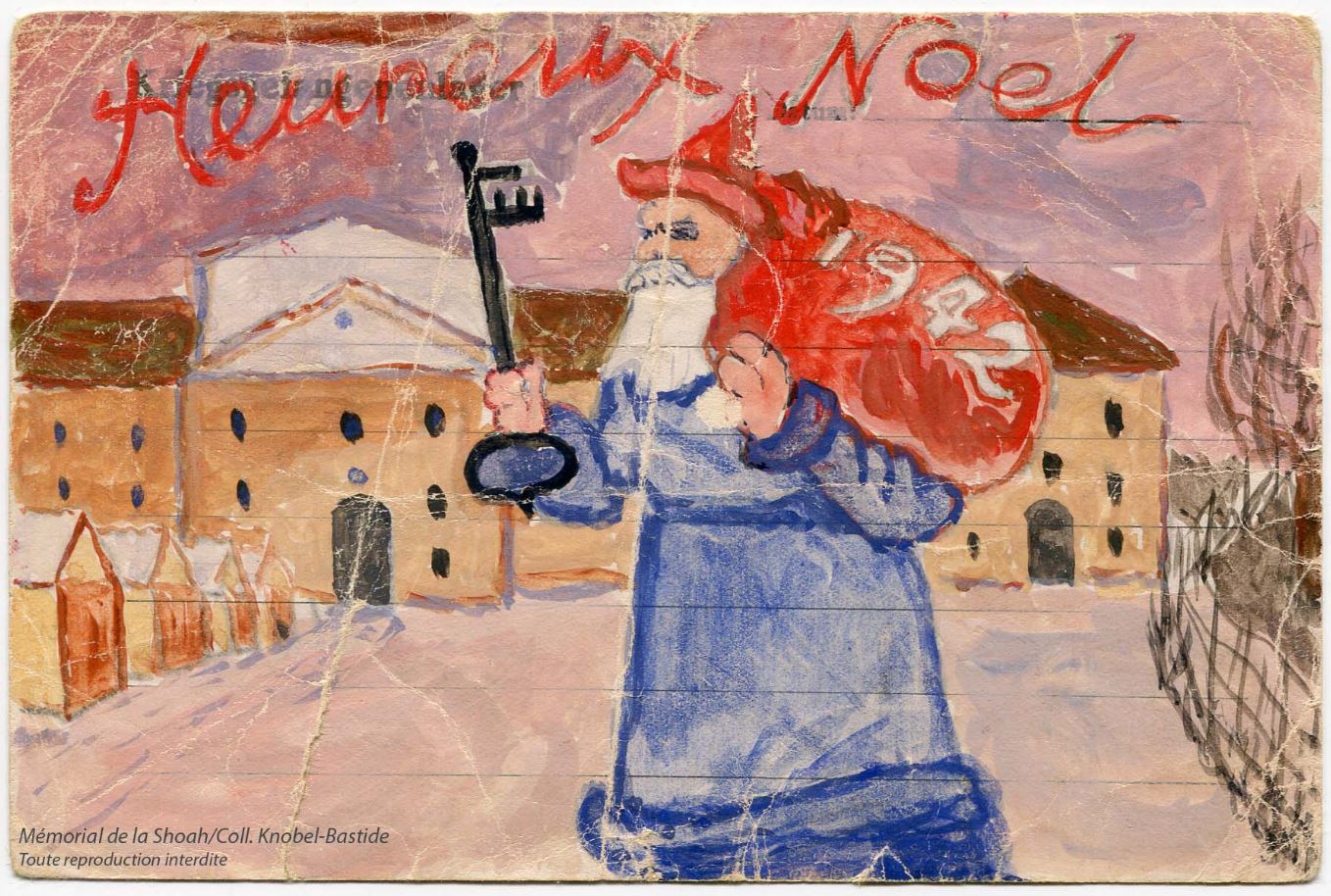
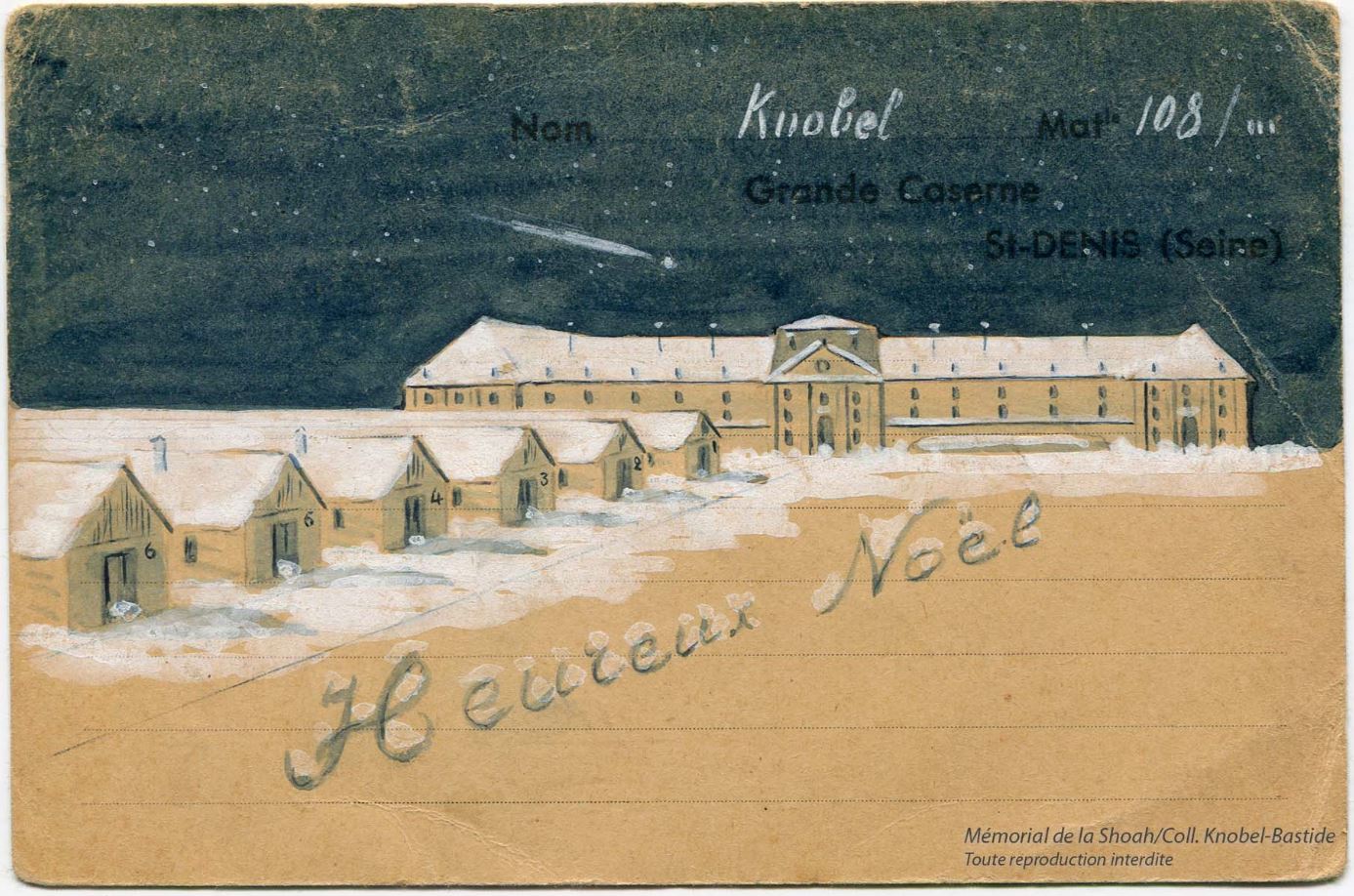
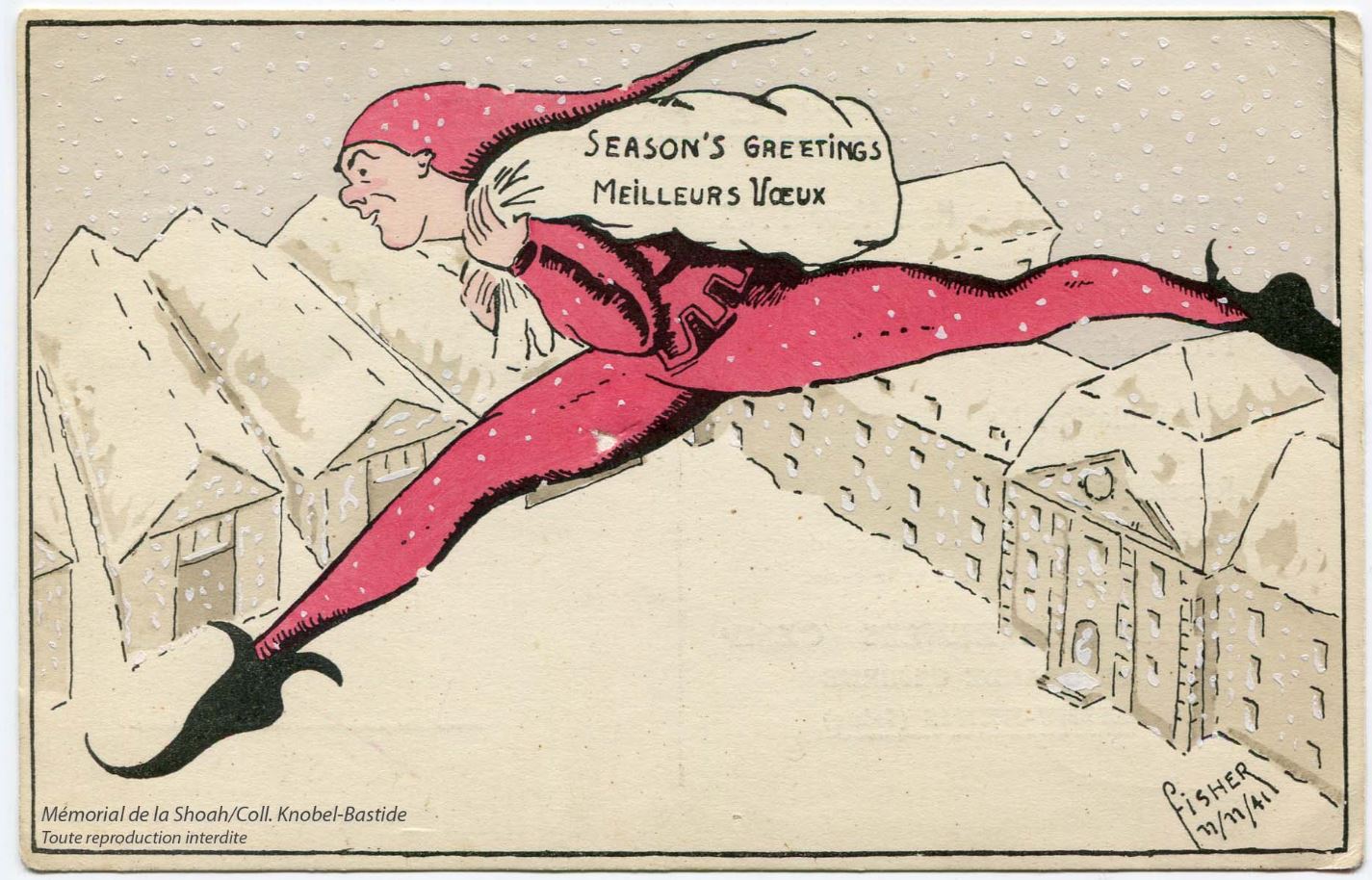
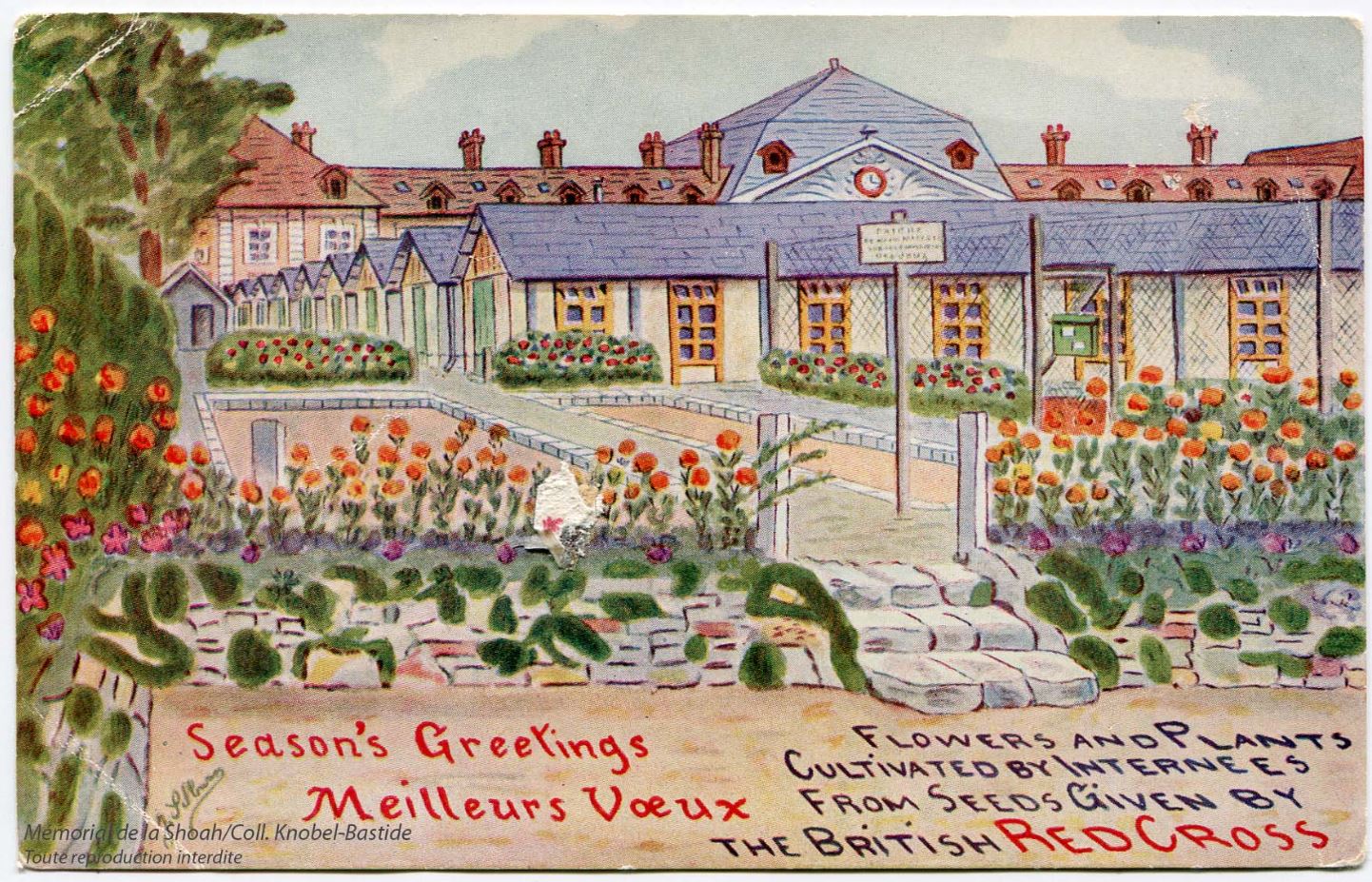
louise pikovsky
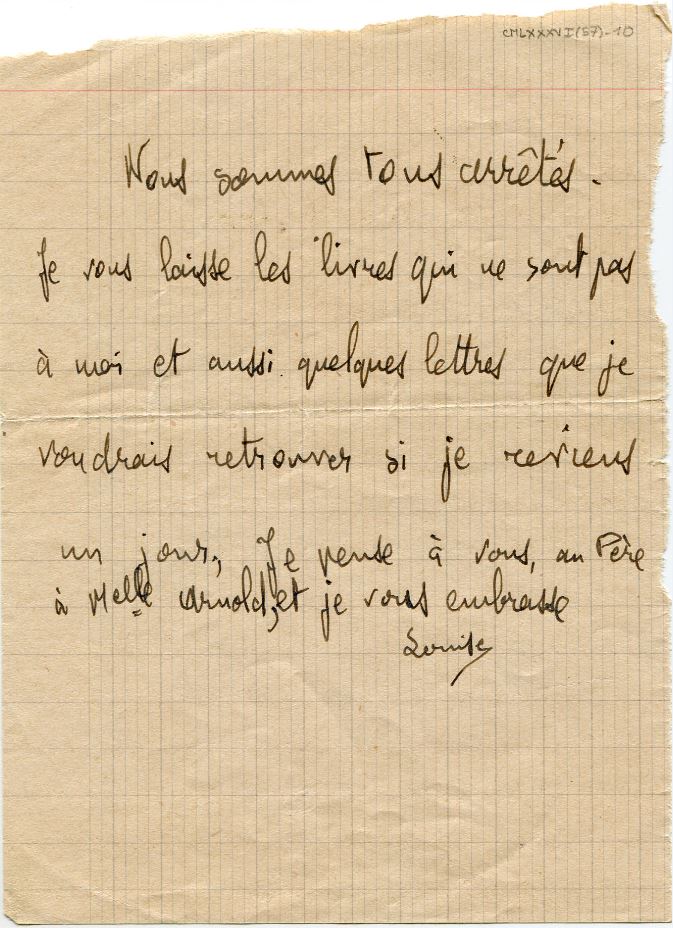
© Shoah Memorial.
On January 22, 1944, Louise Pikovsky, a student at the lycée La Fontaine in Paris, is arrested with her family. Before being transferred to the Drancy camp, Louise leaves a last message with her teacher, Miss Malingrey, to inform her of her departure and leave some books. Louise, her parents, her brother and her two sisters are deported without return by the convoy n°67, on February 3, 1944.
In 2010, during a move to the La Fontaine high school, letters and a photograph of Louise were found in a wardrobe. With the help of a journalist, a professor from the institution reconstructs Louise’s story. On March 3, 2017, in agreement with the high school, all the documents are handed over to the Shoah Memorial to ensure their conservation.
Discover the webdoc produced by Stéphanie Trouillard, France24.
The letter of liba
Abram Korenbajzer and Liba Korenbajzer, born Sztejnfeld, are the parents of Aline Korenbajzer, born on August 31, 1939.
Liba and Aline were arrested on July 16, 1942. They are interned at the Vélodrome d'Hiver with Liba’s sister, Rywka (Régine) Knop, and her sons, Maurice and Simon. At the Vél d'Hiv, Liba writes a letter to his brother Aron asking him to come pick up Aline.
Liba and Aline are interned in Beaune-la-Rolande, transferred to Drancy then deported to Auschwitz by convoy No. 25 on August 28, 1942.
In September 2017, Armand Portnoy, husband of Liba Korenbajzer’s niece, allowed the Shoah Memorial to digitize Liba’s letter in order to preserve the memory of this family.
Transcription of the letter from Liba Korenbajzer:
My dear brother and sister-in-law.
We are talking about sending the children to public assistance, I beg you have mercy on my dear child, claim her and take her with you she will be safe because you are French, and we mothers are talking about sending us to Poland, I certainly won’t survive it but Aline at least will live, don’t refuse me, Aline it’s my only reason to live. Please I beg you, here there are all kinds of diseases that she will get. I am already exhausted, 5 nights that I don’t sleep so much I think about Aline. My yellow face makes everyone feel sorry, but they can do nothing because they have no order. Aron and Bella darling you love her, protect her like a mom because you have children and you understand what it is for a mother. If she goes to public assistance, she will die and this thought drives me crazy. She sleeps on the ground not on wood in the morning she asks me for a bottle of milk and imagines my pain when I don’t have any. Do something for her, claim her. I can no longer write, I am too weak. I kiss you and my little doll.
Régine and the kids are with me.
Kisses
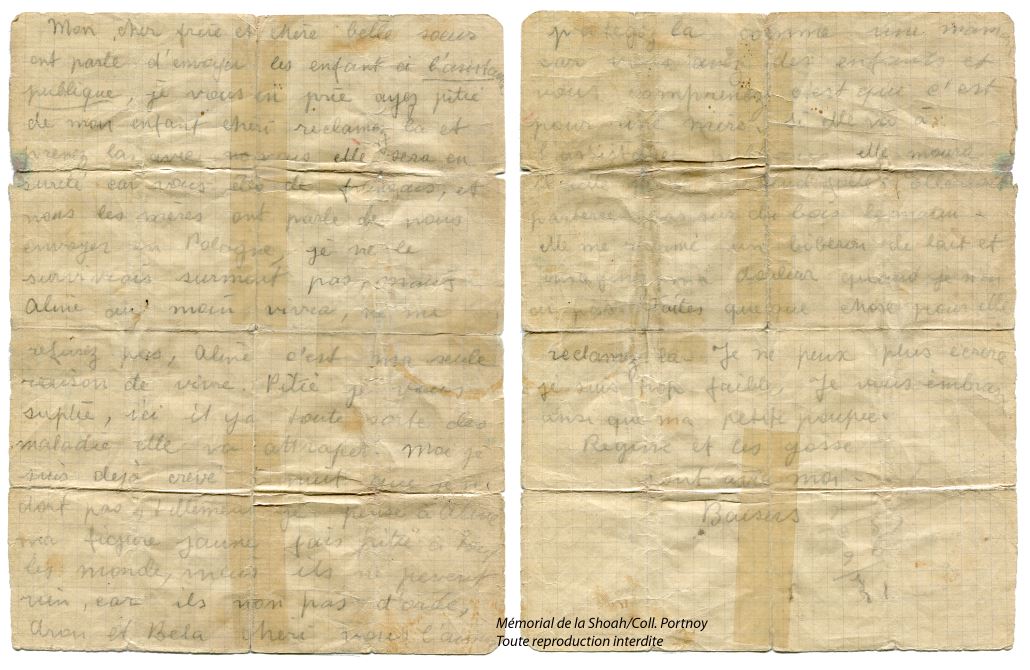
The recipe book of Georgette Bensaid
(As part of the #MuseumWeek2017)
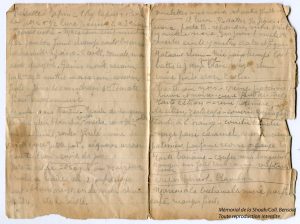
Georgette Bensaid’s recipe book
Jules Bensaid was born in 1901 in Relizane (Algeria) and his wife, Georgette Berrino, in 1903 in Mascara (Algeria). They married in 1925, before leaving for France in 1927. They then settled in Toulouse where they run a bar on Denfert-Rochereau street. The couple will give birth to three children: Reine, born in 1925, Roger, born in 1929 and Marc, born in 1932.
Following the anti-Jewish laws, their bar is aryanized and sold to the waitress. At the same time, Jules obtains 'real' fake papers and decides to hide in Seysses. But in December 1943, while the parents are absent, two of the children, Reine and Roger, are arrested at the bar. Marc, the youngest, manages to escape. Shortly after, Jules Bensaid is also snatched on denunciation. Georgette, who was hiding in Seysses, is also arrested while Marc is at school.
All are deported: Jules by convoy 73, the children by convoi 67 and Georgette by a convoy of politicians. Only Georgette survived. She is released on April 23, 1945 in Ravensbrück from where she wrote many recipes on a notebook and on loose sheets.
Left alone, Marc is welcomed by a neighbor, Germaine Combecave, until the Liberation. He then returns to his family in Mascara, Algeria, where he will later join his mother.
This document was discovered in Toulouse as part of the National Archive Collection that the Memorial is conducting in major cities of France.
the archives of Adolphe Gottschak
Adolphe Gottschak was born on August 26, 1910 in Liepaja (Latvia). He arrived in France in the 1930s to study medicine in Paris. On April 25, 1936, he married Simone Coste and obtained, by marriage, the French nationality a few months later. He was incorporated into the French army on December 26, 1937 as a soldier in the 22nd S.I.M. (military nursing section), then was appointed auxiliary doctor and then aspiring.
In September 1939, he is on duty at the time of the mobilization. He is wounded in December 1939, and will be hospitalized in Rambouillet (Yvelines). He was demobilized in September 1940 in Lectoure (Gers). Military doctor, he was stripped of his nationality and removed from the French army in 1941 because he is Jewish.
He goes to different cities (Montluçon, Montpellier, Toulouse, Toulon, Nice...) where he is looking for a job and plans to enroll in the faculty. He uses false papers drawn up in the name of Adolphe Gonchat and obtains a certificate of catholicity.
On October 28, 1943, he left France via Spain. He was interned at the Lérida camp for two months. He then leaves for Morocco, then to Algiers. He participates in the Italian campaign, the landing in the South, then will go up to Belfort and Besançon.
He returns to Paris in January 1945 where he finds his wife. He is demobilized on October 23, 1945. All his family dies during the Holocaust. Adolphe dies in 2010.
Adolphe Gottschak’s niece, Ronit Atlan, and her husband, Jean-Louis Atlan, recently entrusted the Shoah Memorial with the documents describing his journey.


the feather holders of pithiviers

2016, Roger Hanoune bought at a garage sale in the 20th arrondissement of Paris two feather holders realized at the camp of Pithiviers. Mr. Hanoune finally decided to entrust one of the two feather holders to the Shoah Memorial.
On this object it is written 'To my dear niece Rosette, from your uncle who loves you and always thinks of you. Simon'.
On the second pen holder, which remained in the possession of Mr. Hanoune, the inscription is almost the same, only the first name changes. These feather holders must have been made at the Pithiviers camp by Isaac Schonberg (who will later be deported) for other internees.
Claude Ungar, a volunteer at the Memorial, conducted some research regarding the internee Simon mentioned on the
pen holder: it could be about Simon Szwimer, deported from Drancy to Auschwitz on May 30, 1944 by convoy No. 75.
The drawings by Guy Stern
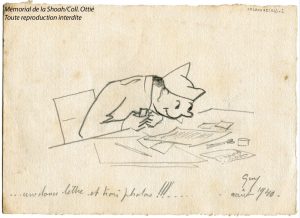
Drawing by Guy Stern, entrusted by Sylvie Ottié to the Memorial
Born on 30 August 1918 in Saint-Mandé (Val-de-Marne), Guy Stern is the son of Georges Stern and Germaine Stern née Levin.
After being enlisted in the army at the beginning of the war, Guy and his future brother-in-law Jacques Frombaum dit «Jif» leave France via Spain. Guy invents a fake name for himself, Stervan. Guy and Jacques separate. Guy is part of the army of General de Lattre, participates in the landing in Provence, the campaign in Italy, and the arrest of Romel’s son in Germany.
Upon his return, he will meet up with his parents, his fiancée Colette, and Jacques Frombaum. Nathan Frombaum (father of Jacques and Colette) was deported from Drancy to Auschwitz on February 11, 1943, and died in deportation.
Guy was a cartoonist. His daughter, Sylvie Ottié, entrusted the Shoah Memorial at the end of August 2016 with pieces of correspondence written among others by Guy illustrated with humorous drawings.
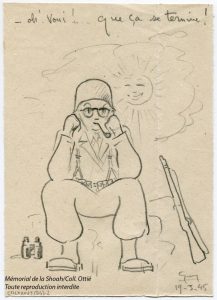
Drawing by Guy Stern, entrusted by Sylvie Ottié to the Memorial

Drawing by Guy Stern, entrusted by Sylvie Ottié to the Memorial
the original documents of karl michel
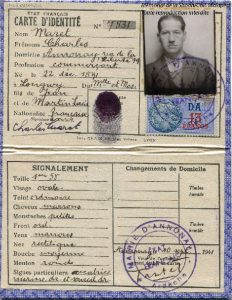 Karl (Charles) Michel was born on 22 December 1891 in Edeheim (Germany). In 1922, he married Georgette Caen. Their daughter, Hilde, was born in Cologne in 1923. Karl is the manager of a department store in Darmstadt.
Karl (Charles) Michel was born on 22 December 1891 in Edeheim (Germany). In 1922, he married Georgette Caen. Their daughter, Hilde, was born in Cologne in 1923. Karl is the manager of a department store in Darmstadt.
After a first arrest, he fled Germany in 1933 and joined his in-laws, Edmond and Mathilde Caen, in Moselle. In 1934, he settled in Marcq-en-Barœul (Nord) with his in-laws. His wife and daughter joined him. He runs a department store. He asks for French nationality in vain.
Arrested in 1939 as a German national, he is interned in Haubourdin then released because married to a French woman.
Under the occupation, the family fled to Limoges. They obtain false papers in the name of Maret.
Hilde is interned in the Gurs camp, then released after two months. Karl is arrested and interned in Saint-Germain-les-Belles (Haute Vienne), then at the Nexon and Gurs camps. He is transferred to Drancy, then deported by convoy No. 51.
At the end of 2015, Hilde’s daughter, Carole Malapert, entrusted to the Shoah Memorial the original documents concerning the history of her grandfather Karl, including a naturalization application, a letter from the city of Limoges asking to leave the city, a false identity card, a letter written by Georgette and Hilde addressed to Karl during his internment in Gurs and a label sent by Karl to Georgette from Drancy.
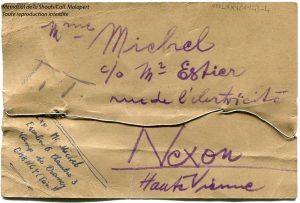
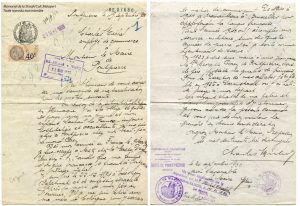
THE DRAWING OF ETIENNE ROSENFELD
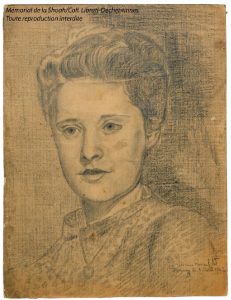 In June 2016, Perle Librati-Dechentinnes, sister of the survivor Maxi Librati, entrusted to the Shoah Memorial a drawing by Etienne Rosenfeld made at the Drancy camp dated April 1, 1942 and representing his wife Annette Mann. This drawing was discovered by Madame Librati-Dechentinnes in a flea market.
In June 2016, Perle Librati-Dechentinnes, sister of the survivor Maxi Librati, entrusted to the Shoah Memorial a drawing by Etienne Rosenfeld made at the Drancy camp dated April 1, 1942 and representing his wife Annette Mann. This drawing was discovered by Madame Librati-Dechentinnes in a flea market.
Born on August 25, 1920 in Budapest, Etienne Rosenfeld is arrested and taken to Drancy on August 20, 1941. He made many drawings during his internment. He was deported to Auschwitz on September 14, 1942 by convoy No. 32. During the evacuation of the Auschwitz camp, he participates in a "death march". He survives and is repatriated to France on June 15, 1945.
THE ITALIAN ARCHIVES AT THE SHOAH MEMORIAL – MAY 2016
The Shoah Memorial has just received four new archival collections from the State Archives of Milan, the Archives of the Jewish Community of Venice, the archives of the Union of Italian Jewish Communities (UCEI) and a private collection, the Liliana Bucci fonds, former deportee to Auschwitz and one of the last witnesses of the Italian Holocaust.
The Shoah Memorial signed some conventions with these institutions and Mrs. Bucci in order to reproduce, by digitizing them, the documents related to the persecutions carried out against the Italian Jews between 1938 and 1945.
These acquisitions are part of a larger project dedicated to Italy. Indeed, since June 2015, the Memorial has launched partnerships with several state archives and Jewish transalpine archives, in order to facilitate access for researchers to the sources of the Italian Holocaust.
We will very soon receive collections from the State Archives of Pisa, Rome and Turin.
Overview of these collections:
LILIANA BUCCI FUND
Liliana Bucci, known as 'Tatiana', was deported on 29/03/1944 by convoy no. 25T from the Risiera San Sabba (Trieste). On 04/04/1944, at the age of 7, she found herself in Auschwitz with her little sister Alessandra "Andra" Bucci (aged 5), her mother Mira Perlow, her grandmother Rosa Farberow, her aunt Gisela Perlow and her cousin Sergio De Simone. Tatiana and Andra are destined for the Kinder Block (the children’s block) and kept apart for medical experiments because they are considered twins. The two sisters manage to escape without suffering physical violence. Mira and Gisela Perlow also survive at the camp. On the other hand, the little Sergio De Simone is assassinated in Bullenhuser Damm, near Hamburg, after having undergone medical experiments at the concentration camp of Neuengamme. The grandmother Rosa, the aunts Sonia and Paula, the uncles Aron Ernesto and Giuseppe Yossi, and the cousins Mario and Silvio Perlow, also find death at Auschwitz or Ravensbrück.
Released on 27/01/1945 by the Red Army, Tatiana and Andra Bucci are placed first in an orphanage in Prague, then in a Jewish educational center run by Alice Goldberger in Lingfield (England). Finally, after long research carried out by their parents Mira and Giovanni, in December 1946, the family is reunited again and settles back in Trieste.
It was from the 1980s that the Bucci sisters began to testify and actively engage in the memory of the Shoah in Italy, participating in commemorations and trips to Auschwitz organized by Italian institutions. Their story is told, among others, in the book by Titti Marrone entitled Régulièrement non sapere, published in 2006 by Laterza editions.
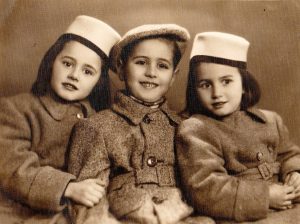
Portrait of the Bucci sisters with their cousin Sergio De Simone (Fiume, 29/11/1943), “Shoah Memorial/Coll. Bucci
STATE ARCHIVES OF MILAN
From the archives of the Prefecture of Milan and Varese, this collection includes numerous documents (92,100 views) on the implementation of racial laws in Lombardy since September 1938.
The period of deportations under the Nazi occupation is also well documented: between December 1943 and January 1945, 14 convoys of Jewish deportees leave from Platform 21 of the Central Station of Milan to Auschwitz, Bergen-Belsen, Ravensbrück and Flossenbürg.
The Jewish community of Milan has 896 deportees, of whom only 50 have survived.
ARCHIVES OF THE ISRAELITE COMMUNITY OF VENICE
Coming from the archives held at the Biblioteca-Archivio «Renato Maestro», this collection includes numerous documents (about 56,000 views) on the implementation of racial laws and on the period of Nazi occupation in Venice.
Between December 1943 and August 1944, 246 people were deported. Among them, many elderly people from the community nursing home, including Chief Rabbi Adolfo Ottolenghi.
ARCHIVES OF THE UNION OF THE JEWISH COMMUNITIES OF ITALY (UCEI)
From the archives of the Union, this collection includes numerous documents (about 17,000 views) on the enforcement of racial laws since September 1938, as well as on the internment and deportation of Italian and foreign Jews living in Italy.
There is also a very rich documentation concerning the activities of the Jewish assistance organization DELASEM (Delegation for the Assistance to Emigrants).
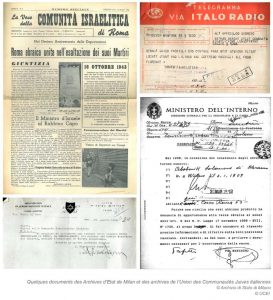
All of these documents are now accessible in the reading room of the Shoah Memorial
Davide Mano
Memorial Archives Service
Partners:

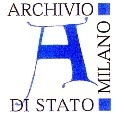

THE PHOTO ALBUM OF THE PUNSKI FAMILY – FEBRUARY 2016
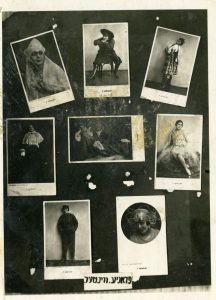
© Shoah Memorial
In 1975, Serge Mogère, author of comic books, visited a house threatened with destruction in Choisy-le-Roy and discovered a magnificent album of old photos, visibly abandoned by former owners. Disturbed by these family photos, the faces and the period costumes that he discovered in this album, he then decided to keep it. A few months ago, Mr. Mogère handed over this photo album to the Shoah Memorial’s photo library.
A long research work carried out by documentalists and archivists of the Shoah Memorial finally led to the discovery that these were actually photos of the Punski family, originally from Warsaw, dating from the 1920s-1930, among which were those of a well-known actress, Franya Winter, executed by the Germans in 1942 in the city of Ashmyany (now located in Belarus).
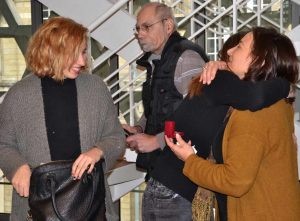
Meryl Frank offers the earrings of Malka Punski to Serge Mogère’s daughter
How could these photos find themselves abandoned in France, in this pavilion of Choisy-le-Roy and rediscovered 70 years later?
The documentalists of the Documentation Center of the Shoah Memorial conducted the investigation and finally found a member of the Punski family in the United States: Meryl Frank.
This woman, who is also the United States ambassador to the UN for women’s rights, sent a genealogical tree which allowed the documentalists to understand that one of Franya Winter’s brothers had emigrated to France in the 1920s and had unfortunately been deported by convoy no. 5, leaving behind a wife and a child whose, to this day, we have not found the trace.
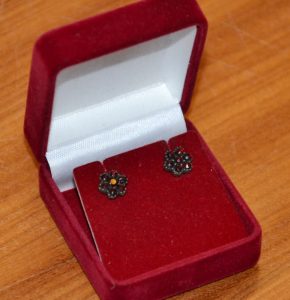 Meryl Frank decided to make the trip from the United States to go for the first time to the Shoah Memorial on Thursday, February 18, 2016. On this occasion, she met Serge Mogère, the person who discovered the photo album. Both came accompanied by their respective daughters and Meryl Frank wished to offer the daughter of Serge Mogère a pair of earrings that belonged to Malka Punski, the mother-in-law of Franya Winter, who was also a victim of the Holocaust.
Meryl Frank decided to make the trip from the United States to go for the first time to the Shoah Memorial on Thursday, February 18, 2016. On this occasion, she met Serge Mogère, the person who discovered the photo album. Both came accompanied by their respective daughters and Meryl Frank wished to offer the daughter of Serge Mogère a pair of earrings that belonged to Malka Punski, the mother-in-law of Franya Winter, who was also a victim of the Holocaust.
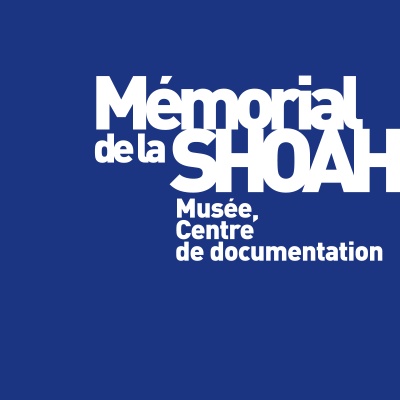
 Marius Fiche
Marius Fiche By researching the letters written in Birkenau,
By researching the letters written in Birkenau, Mathilde Gosset was born on March 5, 1916, in Sofia (Bulgaria). She is the daughter of Aaron and Suzanne Samuel. All three live in Constantinople. In 1923, they settled in Bucharest due to the Greek-Turkish conflict. Mathilde begins her medical studies there but the wave of antisemitism forces her to interrupt them and leave Romania for France.
Mathilde Gosset was born on March 5, 1916, in Sofia (Bulgaria). She is the daughter of Aaron and Suzanne Samuel. All three live in Constantinople. In 1923, they settled in Bucharest due to the Greek-Turkish conflict. Mathilde begins her medical studies there but the wave of antisemitism forces her to interrupt them and leave Romania for France. Born in Ukraine in 1909,
Born in Ukraine in 1909,

















 Karl (Charles) Michel was born on 22 December 1891 in Edeheim (Germany). In 1922, he married Georgette Caen. Their daughter, Hilde, was born in Cologne in 1923. Karl is the manager of a department store in Darmstadt.
Karl (Charles) Michel was born on 22 December 1891 in Edeheim (Germany). In 1922, he married Georgette Caen. Their daughter, Hilde, was born in Cologne in 1923. Karl is the manager of a department store in Darmstadt.

 In June 2016, Perle Librati-Dechentinnes, sister of the survivor Maxi Librati, entrusted to the Shoah Memorial a drawing by Etienne Rosenfeld made at the Drancy camp dated April 1, 1942 and representing his wife Annette Mann. This drawing was discovered by Madame Librati-Dechentinnes in a flea market.
In June 2016, Perle Librati-Dechentinnes, sister of the survivor Maxi Librati, entrusted to the Shoah Memorial a drawing by Etienne Rosenfeld made at the Drancy camp dated April 1, 1942 and representing his wife Annette Mann. This drawing was discovered by Madame Librati-Dechentinnes in a flea market.





 Meryl Frank decided to make the trip from the United States to go for the first time to the Shoah Memorial on Thursday, February 18, 2016. On this occasion, she met Serge Mogère, the person who discovered the photo album. Both came accompanied by their respective daughters and Meryl Frank wished to offer the daughter of Serge Mogère a pair of earrings that belonged to Malka Punski, the mother-in-law of Franya Winter, who was also a victim of the Holocaust.
Meryl Frank decided to make the trip from the United States to go for the first time to the Shoah Memorial on Thursday, February 18, 2016. On this occasion, she met Serge Mogère, the person who discovered the photo album. Both came accompanied by their respective daughters and Meryl Frank wished to offer the daughter of Serge Mogère a pair of earrings that belonged to Malka Punski, the mother-in-law of Franya Winter, who was also a victim of the Holocaust.